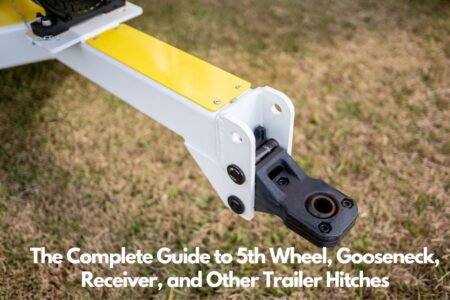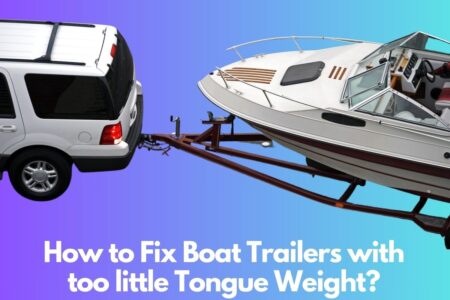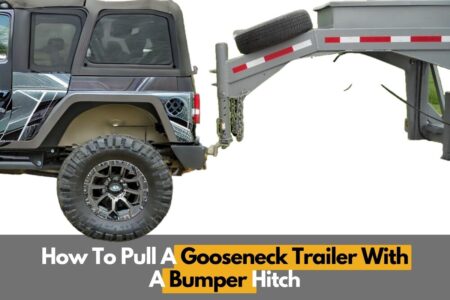
Gooseneck hitches provide one of the most stable options for towing large, heavy trailers like horse and livestock trailers, boats, RVs, equipment, and construction machinery. Mounting a gooseneck coupler over the truck bed places weight right over the rear axle for excellent handling and control.
This comprehensive guide covers everything you need to know about selecting, installing, and towing safely with gooseneck hitches:
What is a Gooseneck Hitch?
A gooseneck hitch mounts a trailer coupler ball in the bed of pickup trucks to tow heavy trailers. The gooseneck trailer neck extends over the bed and connects to the ball, allowing the trailer weight to sit close to the tow vehicle’s rear axle.
Benefits of gooseneck hitches:
- Excellent weight distribution and stability
- High tow ratings over 30,000 lbs
- Easier maneuverability compared to fifth wheels
- Complete bed access when not towing
Goosenecks are the preferred hitch system for towing large horse, livestock, car, industrial, and cargo trailers across long distances.
Gooseneck Hitch Equipment and Components
A complete gooseneck hitch setup requires:
- Gooseneck ball – Usually a 2-5/16” or 3″ diameter ball mounted in the truck bed
- Ball platform – Understructure that drops into truck bed providing ball mount
- Safety chain anchor points – For attaching trailer safety chains
- 7-Way trailer plug – To connect electrical signal and power
Quality platforms provide a removable gooseneck ball for flexibility. Built-in brackets allow adjusting the ball height to level towed trailers.
Gooseneck Hitch Weight Ratings and Towing Capacity
Gooseneck hitches have extremely high weight ratings:
- Gross trailer weight ratings up to 40,000 lbs
- Vertical load ratings up to 15,000 lbs
- Gooseneck balls and platforms are drop-tested for strength
Always match the gooseneck hitch rating to your fully loaded trailer weight. The heavy tongue loads require a robust hitch.
Consider adding airbags or helper springs if nearing the rear axle rating to assist suspension.
Choosing the Right Gooseneck Hitch
Follow these steps when selecting a gooseneck hitch:
- Check truck model compatibility – The hitch platform must precisely fit your truck bed size and anchor points.
- Match gross trailer weight – Choose a gooseneck hitch rated for your maximum loaded trailer weight.
- Consider dual pivoting models – For easier trailer connecting on uneven ground and tighter turns.
- Mind the ball size – Gooseneck balls come in 2-5/16”, 3-1/2″, and other large diameters. Match the coupler.
- Plan for custom install – Most install direct to the frame requiring drilling holes into the truck bed floor.
Consult your trailer manual for specifics like GTW, coupler type, and ball size needed. Shop for a gooseneck designed specifically for your truck’s make, model, year, and bed length. Never undersize the hitch.
How to Install a Gooseneck Hitch
Installing a gooseneck hitch requires precise measurements and drilling to anchor to the truck frame. Here are the basic steps:
Tools Needed
- Hand tools – wrenches, sockets, torque wrench, drill, drivers
- Drill bits
- Eye protection
- Gloves
Prep Work
- Assess frame – Determine exact frame mounting points under the bed for the platform.
- Inventory hardware – Confirm all parts are included.
Installation
- Mark holes – Use the template to mark pilot hole locations in the bed floor above the frame.
- Drill holes – Carefully drill holes through the bed floor for the platform bolts using sharp bits.
- Mount platform – Bolt the platform vertically to the frame through the bed floor holes. Torque bolts to spec.
- Install ball – Tighten gooseneck ball securely into the platform shank.
- Seal holes – Seal around mounting holes to prevent moisture entering frame.
- Test operation – Ensure the platform is situated securely with no movement or gaps.
Taking your time ensures holes are drilled precisely for a solid mounting. Having a professional perform the install is wise if new to truck work.
Hitching Up a Gooseneck Trailer
Mastering the process for hitching up a gooseneck trailer takes practice but soon becomes second nature:
- Prep trailer – Chock wheels, extend jacks, connect safety chains loosely with slack
- Position truck – Carefully back up straight keeping ball centered under coupler
- Lower trailer – Turn jack handle to lower gooseneck neck until coupler fully engages and seals on ball
- Remove dolly wheel – For hydraulic tilting models, retract dolly wheel completely
- Anchor chains – Crisscross chains under coupler and attach hooks to anchor points on hitch
- Check trailer height – Trailer frame should sit parallel to ground when hitched. Adjust leveling jacks as needed.
- Stow jack – Fully retract jack so no weight remains on it. Gooseneck weight should now all be on truck suspension.
- Connect trailer wiring – Plug 7-pin connector into truck outlet
- Inspect couplng – Confirm ball is fully seated in coupler socket before towing
Follow the same systematic process each time for safe, reliable trailer hookups.
Unhitching a Gooseneck Trailer
Unhitching follows similar ordered steps:
- Position truck – Park in a straight line on level ground where trailer will remain
- Chock trailer – Chock both trailer wheels to prevent rolling
- Level trailer – Adjust leveling jacks to remove weight from hitch. Raise slightly higher than truck bed height.
- Disconnect wiring – Unplug 7-pin connector
- Remove chains – Detach safety chains from both anchor points
- Release coupler – Remove locking pin so coupler opens fully off the ball
- Pull forward – Move truck slowly forward to separate completely from trailer
- Finish unhitching – Lower trailer jacks fully until resting safely on blocks or pad
Always use the same routine and go slow to avoid damage. Having a helper watch clearance and chains is wise.
Maintaining Your Gooseneck Hitch
Follow these tips to keep a gooseneck operating properly for years:
-Annually clean and lubricate ball, coupler, pivots, and anchors
-Frequently check for cracks or damage in platform, ball, or coupler
-Keep platform bolts tightened to specified torque
-Watch for wear in coupler ball socket from use – replace early if closing loosely
-Check clearance around ball – shim anchors if platform shifts
-Inspect safety chains and hooks for damage – replace worn hooks
-Ensure adequate tow vehicle rear axle suspension ratings for tongue loads
-Touch up any scratches or rust spots on steel components
Proper care and maintenance helps ensure years of reliable service from quality gooseneck hitch equipment.
Towing Safety Tips With Gooseneck Trailers
Once hitched up properly, here are some key towing safety tips:
- Respect height limits – Watch for low overpasses and bridges that can strike the trailer roof
- Allow very wide turns – The trailer tracks inside your truck’s turning arc.
- Use extended mirrors – Helps monitor trailer sides since you can’t see behind it directly
- Watch for blowouts – A rear blowout on the trailer can cause strong swaying if not controlled
- Anticipate trailer sway – Sway tendencies increase with trailer length. Correct sway immediately but smoothly.
- Match speed to conditions – Slow down in rain, snow, or wind. Reduce speed more on curves or slopes.
- Use lower tow gear – Helps engine braking on downhills and provides better acceleration control
- Brake early – Allow ample stopping distance for the combined vehicle weight
- Practice maneuvering – Mastering slow, patient backing takes experience. Use a spotter to help.
Carefully honing your gooseneck towing skills and always driving defensively provides the best safety. Never rush any aspect of hitching up or maneuvers.
Troubleshooting Gooseneck Hitch Issues
If any problems arise with your gooseneck hitch, check these areas:
Trailer disconnects while towing
- Worn coupler – Check for excessive play or gaps allowing pop-off. Replace if worn.
- Unsecured hitch pin – Ensure pin is properly inserted through coupler and locked
Noise over bumps
- Check for play in anchor points – Tighten, shim, or seal gaps
Ball oscillates in coupler
- Bent coupler – Inspect for damage like cracks or warped shape. Replace if an issue.
- Excess coupler wear – Measure for excessive socket diameter. Wear beyond 1/16” indicates replacement needed.
Trailer tongue weight incorrect
- Bent gooseneck – Check for distortion limiting full socket engagement.
Trailer hard to connect
- Ball and coupler misaligned – Position coupler directly over ball when hitching.
Jack difficult to operate
- Internal damage or corrosion – Clean and lubricate screw mechanism. Inspect components.
Regular inspection and maintenance helps minimize major problems with your gooseneck hitch system. But when issues eventually emerge, methodically tracing down the source of the problem and addressing it helps get you back on the road.
Gooseneck hitches enable incredibly heavy loads to be towed safely and securely. Follow the guidance provided in this guide when selecting, installing, and operating a gooseneck hitch. Taking time to learn proper care and usage techniques will ensure your gooseneck equipment lasts for the long haul. Tow confidently knowing you have the ideal hitch system for managing the largest trailers and cargo.


